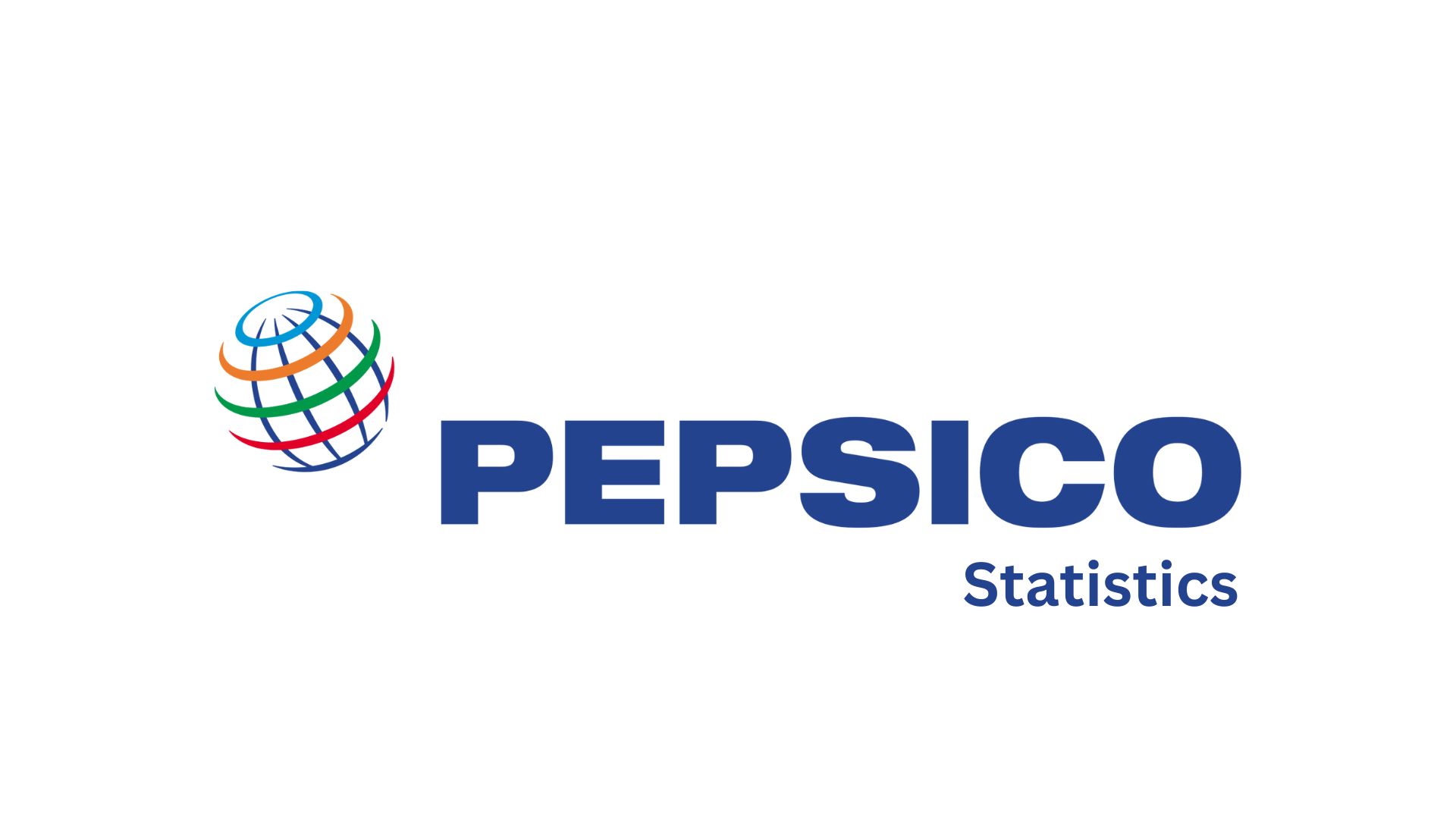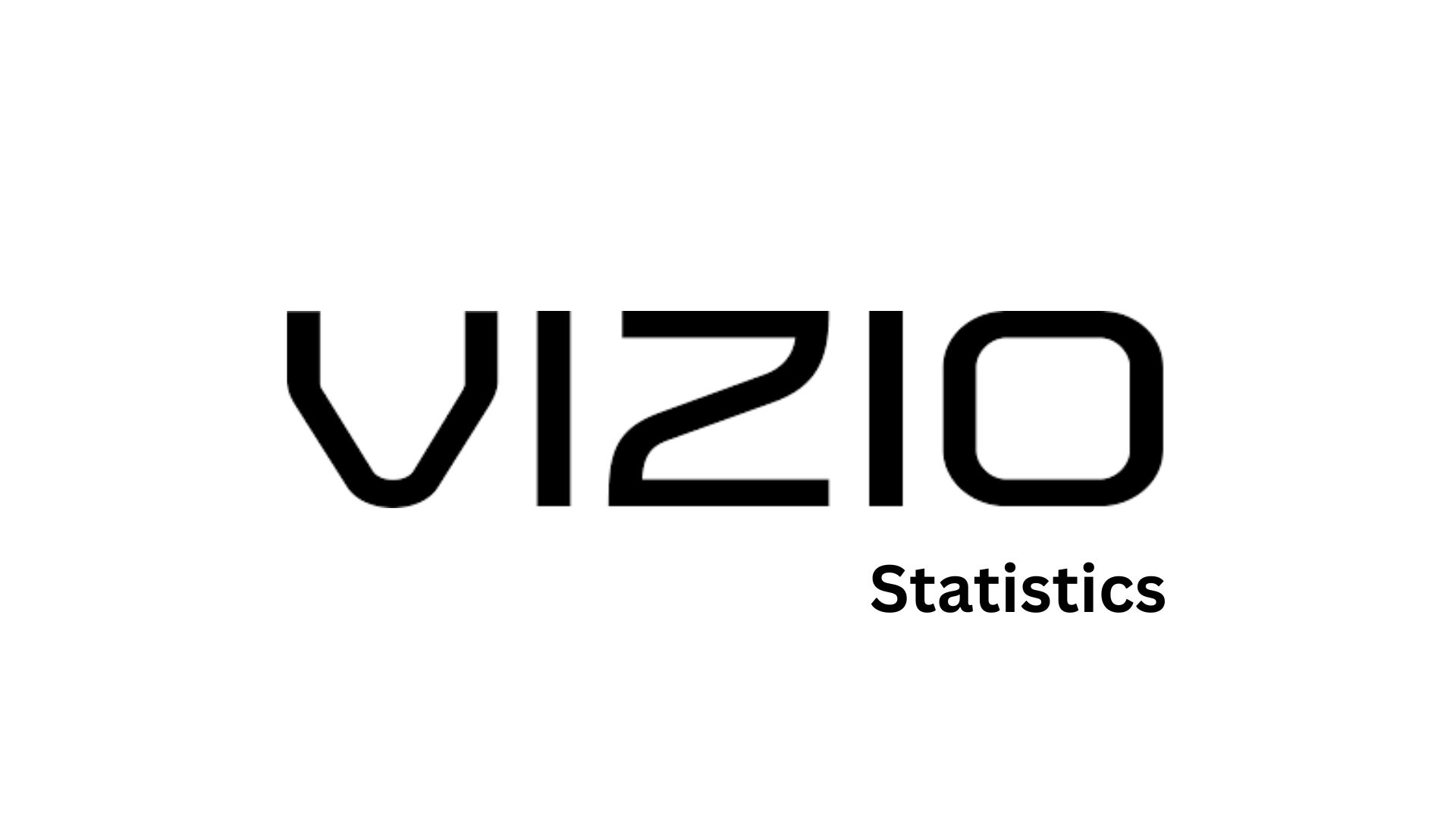Leadership Statistics And Facts (2025)

Updated · Jul 31, 2025


WHAT WE HAVE ON THIS PAGE
- Introduction
- Editor’s Choice
- Employee Engagement and Managerial Influence
- Leadership Development and Training Impact
- Servant Leadership – Engagement, Retention, and Performance
- Leadership Organizational Impact
- CEO Succession, Turnover, and Pipeline Challenges
- Gender Diversity in Leadership and Boardrooms
- Global Gender Diversity in Leadership
- Digital and Future Leadership Competencies
- Leadership Development and Mentorship Programs
- CEO Tenure, Turnover, and Succession Readiness
- Conclusion
Introduction
Leadership Statistics: When we talk about leadership, it’s easy to think about just personalities or titles. But there’s a whole world behind this term. I would like to explain everything about leadership statistics. These numbers don’t just tell us who’s leading or how many leaders there are; they tell insights about what makes leadership work, how different styles affect companies, and where we stand in creating fair and future leadership.
In this article, I’ll walk you through some leadership statistics from trusted, up-to-date sources. We’ll explore how leadership influences employee engagement, the gender gap in top roles, how technology impacts, what skills leaders need, and much more.
It’s also showing us what’s working, what’s missing, and what leaders must focus on in today’s fast-charging world. By the end, you’ll not only see the big picture of leadership, but also understand why these numbers matter. Let’s dive in.
Editor’s Choice
- Companies with highly engaged leaders see up to 21% higher profitability and 29% better employee retention, making leadership investment a critical strategic priority.
- Organizations practicing servant leadership report 85% employee engagement and 15%+ productivity boosts, proving empathy-driven leadership pays off.
- Women hold only 11% Fortune 500 CEO roles and 32% of senior leadership globally, highlighting the urgency to accelerate diversity and inclusion efforts for better innovation and performance.
- With 70% leadership skills changing due to digital transformation, leaders must master AI literacy, emotional intelligence, cybersecurity, and agile decision-making to stay relevant.
- CEO turnover is rising, with 8% turnover projected for 2025 in S&P 500 firms, while only 28% of CEO successions are planned, signaling major pipeline vulnerabilities.
- Although 83% of organizations value leadership development, only 5% fully integrate it into their core strategy, creating gaps in readiness for future challenges.
- Nearly 44% of CEOs hired in 2024 came from outside the organization, indicating insufficient leadership depth internally.
- Emotional intelligence (EQ) and communication are top leadership skills for trust and high-performing teams, especially in hybrid and remote work environments.
- Diverse teams only realize creativity and profit gains when women and minorities are truly integrated into decision-making roles.
- Investing in mentoring and digital learning boosts leadership skill growth by over 60%, underscoring the need for blended, fast, and future-ready development programs.
| Insight Area | Key Statistic / Impact |
| Profit & Retention via Leadership |
+21% profitability; +29% retention |
| Servant Leadership Benefits | 85% engagement; +15% productivity |
| Gender Diversity Status |
11% Fortune 500 women CEOs; 32% senior leaders |
| Digital Leadership Skill Shift | 70% of leadership skills are evolving |
| CEO Turnover & Succession Risk |
14.8% turnover projected; 28% planned succession |
| Leadership Development Adoption | 83% value it; only 5% fully integrate |
| External CEO Hiring Trend |
44% external hires in 2024 |
| Emotional Intelligence Priority | EQ & communication vital for engagement |
| Inclusion Drives Outcomes |
Inclusion is essential for creative & profit gains |
| Mentoring & Learning Impact | +60% skill growth with mentoring & digital learning |
Employee Engagement and Managerial Influence
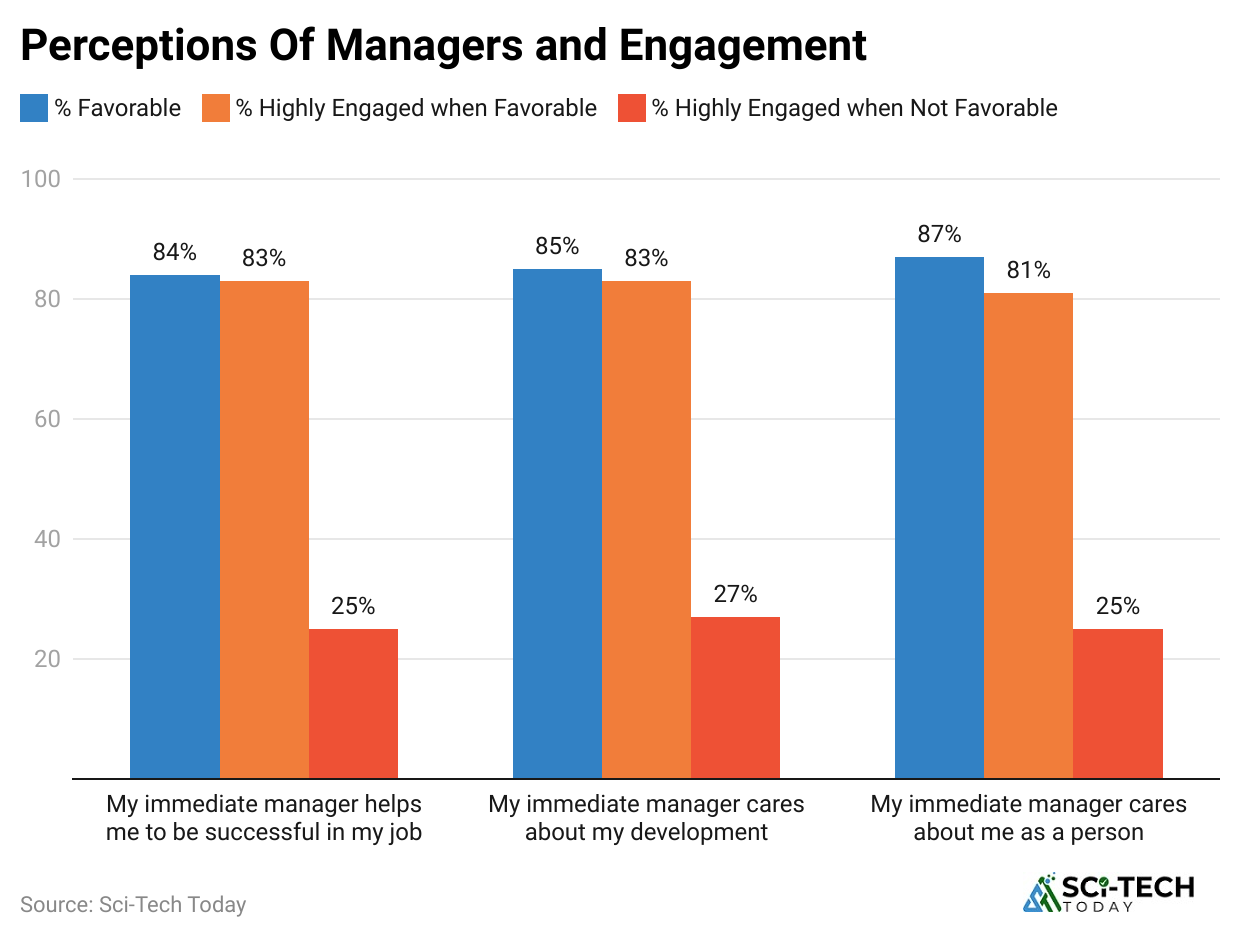
- Only 21 % of employees worldwide reported being engaged in 2024, down from 23 % in 2023this drop was driven primarily by manager disengagement.
- Manager engagement fell from 30 % to just 27 %, fueled by growing responsibilities like hybrid‑work oversight and AI integration.
- Approximately 70 % of a team’s engagement level is directly influenced by their immediate manager, underscoring the central role of first‑line leadership.
- Disengaged workers cost the global economy around $438 billion in lost productivity in 2024, per Gallup’s estimate.
- Only 44 % of managers globally have received formal leadership training, despite the direct correlation between manager training and team engagement.
- Managers under 35 saw engagement decline by 5 points, and women saw a 7-point drop, indicating demographic vulnerabilities.
- Stress and burnout plague managers: 67 % report regular stress, and 73 % experienced burnout in the past year.
- About 60 % of organizations see employee disengagement as stemming from poor management, while 75 % of managers believe leadership is the key driver of employee engagement.
- Teams led by managers who give regular feedback outperform by 23 %, and companies with competent management see 30 % higher engagement and 25 % lower turnover.
- Only 29 % of employees trust their immediate supervisors; poor communication further erodes engagement and retention.
| Insight | Key Figure |
| Global employee engagement | 21 % |
| Manager engagement | 27 % |
| Team engagement is tied to the manager | 70 % |
| Global productivity cost | $438 billion |
| Managers with formal training | 44 % |
| Engagement drop among young/female managers | to 5 and to 7 points |
| Managers experiencing stress or burnout | 67 % / 73 % |
| Disengagement is attributed to poor leadership | 60 % of organizations |
| Performance boost with feedback and training | +23 % team performance |
| Trust in the immediate manager | 29 % |
Leadership Development and Training Impact
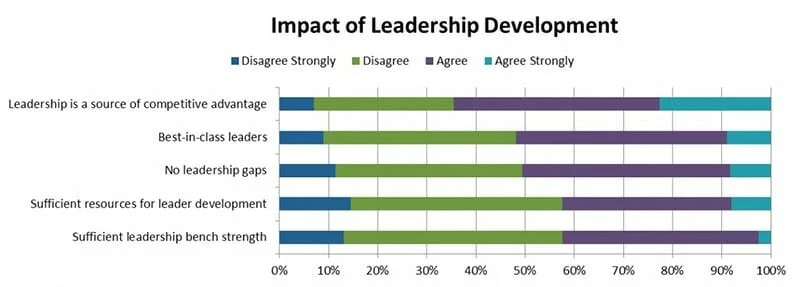
- 77 % of organizations report insufficient leadership depth across levels, highlighting a significant pipeline gap for future leaders.
- Only 44 % of managers globally receive formal leadership training, contributing to poor managerial effectiveness and lower engagement.
- Companies investing in leadership development are 25 % more likely to achieve superior business outcomes, including improved profitability and growth.
- 71 % of Millennials say they would leave within 3 years if leadership development programs are lacking.
- External hires into leadership positions are 61 % more likely to fail within 18 months compared to internally promoted candidates.
- Only about 10 % of people are natural leaders, but around 20 % show potential that can be unlocked with proper training.
- AI‑powered leadership training improves skill acquisition by 20 % over traditional methods.
- Inclusive leadership teamsdiverse by genderare 21 % more likely to outperform competitors.
- On average, leadership programs boost employee retention by 59 % and profitability by 21 %.
- 45 % of employees say they are more likely to stay in their role if they receive more training; over 90 % say development opportunities keep them engaged.
| Insight | Key Stat |
| Organizations lacking leadership depth | 77 % |
| Managers without formal training | 56 % (i.e., only 44 % trained) |
| Outcome improvement with training | +25 % business results |
| Millennial turnover risk without training | 71 % within 3 years |
| Failure rate for external hires | +61 % over internal promotions |
| Natural vs trainable leadership potential | 10 % vs 20 % |
| Effect of AI in training | +20 % skill gain |
| Gender diversity effect | +21 % performance |
| Retention uplift from training | +59 % retention |
| Employee retention tied to training | 45 to 90 % support |
Servant Leadership – Engagement, Retention, and Performance
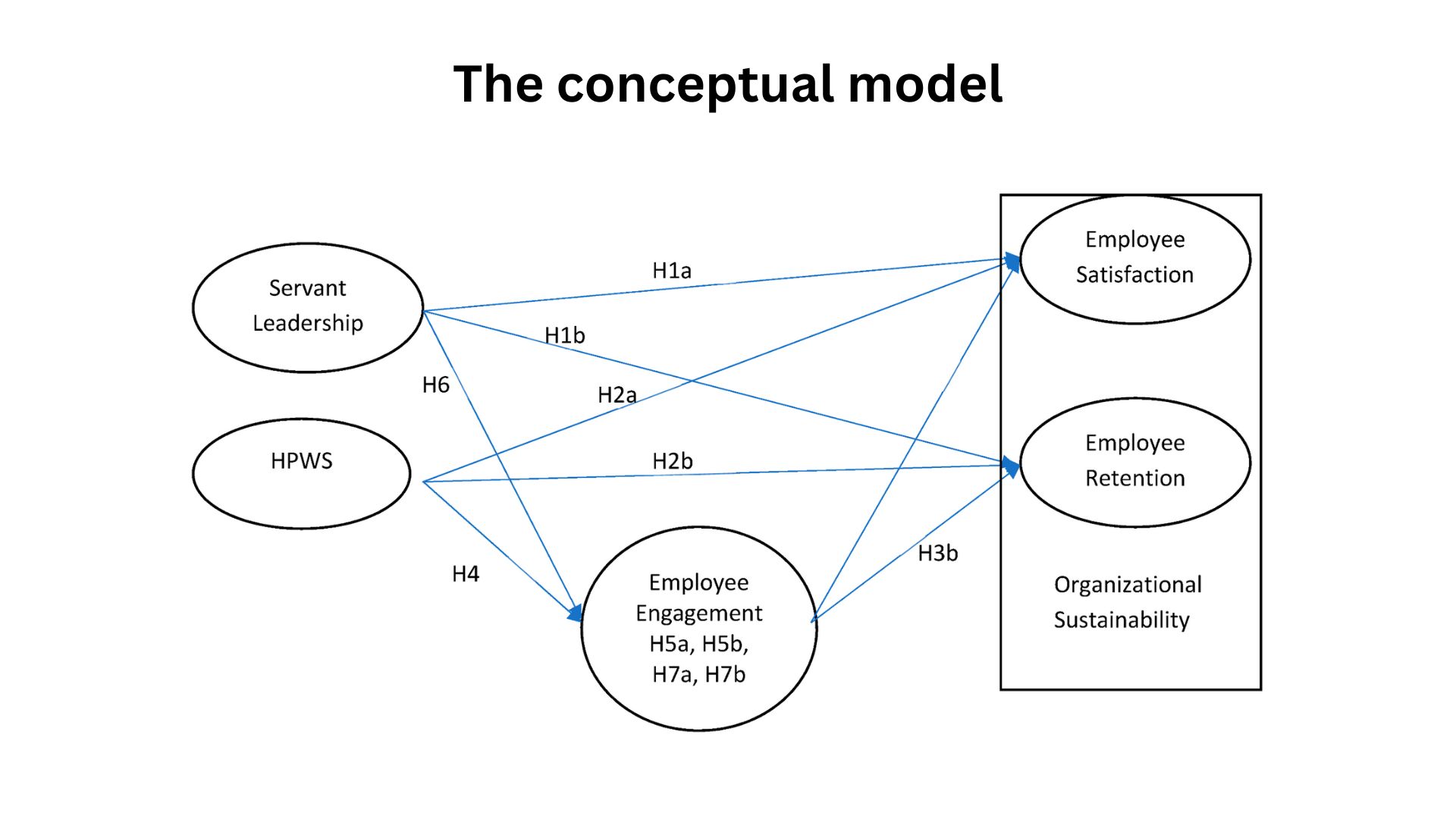
- Companies led by servant leaders see 27 % higher employee engagement, per Gallup studies.
- Servant leadership can boost engagement by 34 %, according to 2025 research across sectors.
- Organizations with servant leadership report 60 % higher engagement scores, stronger team cohesion, and reduced turnover.
- A peer-reviewed study (Pakistan IT sector) showed servant leadership significantly improves task performance via employee promotive voice (β = 0.14, t = 3.43, p = 0.001).
- 71 % of small businesses with servant leaders achieve long-term success. Over 90 % of employees report feeling valued and heard under servant leadership styles.
- In safety-critical sectors (e.g., fire services), servant leadership leads to higher engagement, performance, and retention.
- Servant leadership enhances psychological safety, trust, and growth, driving discretionary effort and loyalty.
- Ethical leadership, empathy, and humility (principles of the Incarnation model) directly correlate with higher commitment and engagement.
- Servant leadership fosters innovation, ethics, and retention in 70 to 90 % of cases, depending on context.
| Benefit Area | Statistic / Outcome |
| Engagement uplift (Gallup) | +27 % |
| Engagement boost (2025 study) | +34 % |
| Retention and cohesion gains | +60 % |
| Performance via promotive voice | β = 0.14; p = 0.001 |
| Small business long-term success | 71 % |
| Employees feel heard/responded to | Over 90 % |
| Applicability in high-stakes sectors | improved performance & retention |
| Trust & psychological safety | core driver of loyalty |
| Ethical & humble leadership impact | higher commitment and engagement |
| Innovation and retention prevalence | 70 to 90 % of organizations |
Leadership Organizational Impact
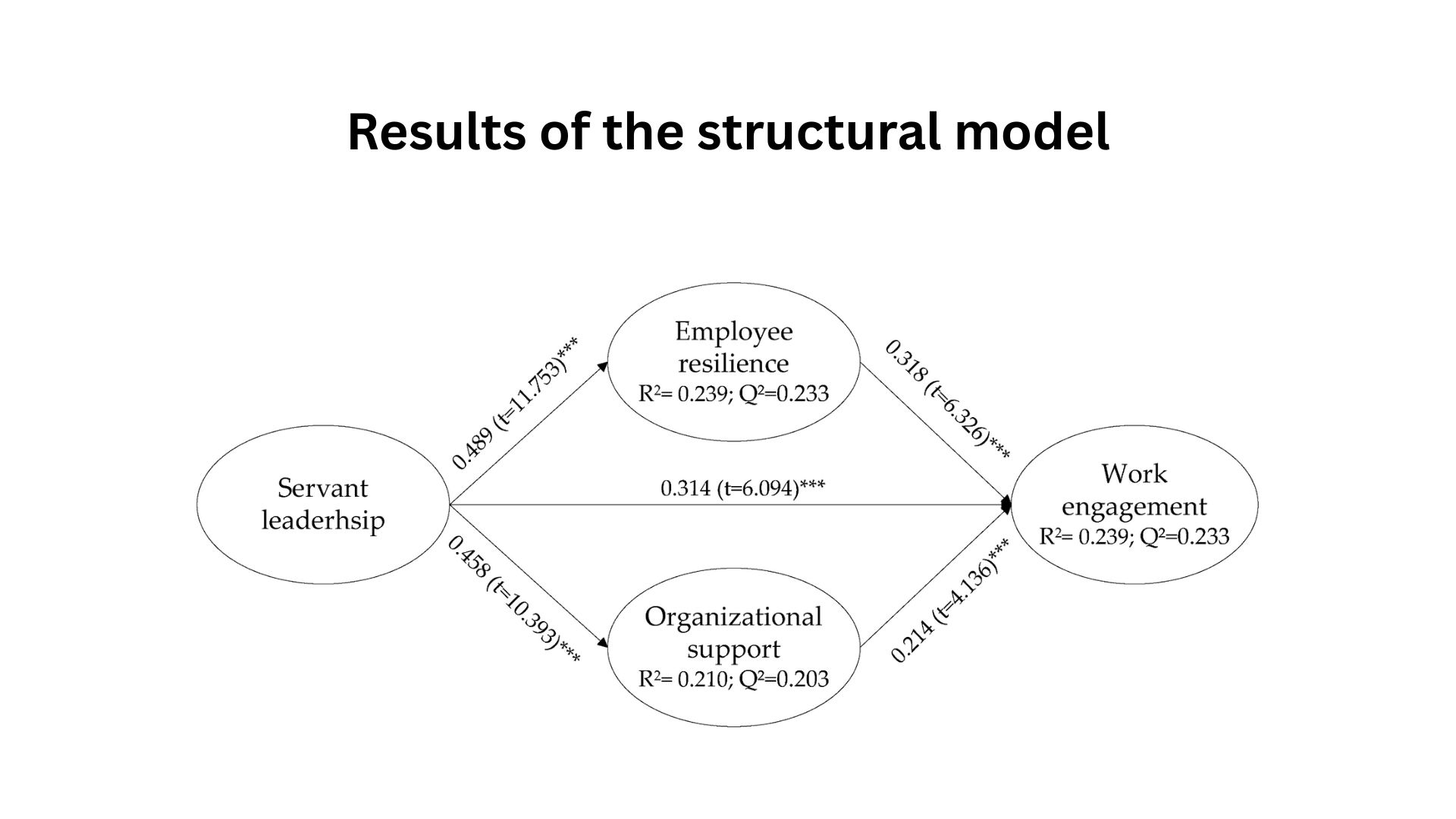
- 85% of employees in organizations practicing servant leadership report higher engagement driven by feeling seen and valued.
- 80% of employees express stronger loyalty when served by servant leaders, correlating with lower turnover intent.
- 67% of organizations report significantly higher retention rates under servant leadership models.
- More than 25% boost in innovation is reported across teams within servant-led cultures. 20% improvement in customer satisfaction is tied to servant leadership, as employees engage better and deliver higher service standards.
- 73% of leaders practicing this style see enhanced employee development outcomes and stronger succession pipelines.
- 78% of CEOs affirm servant leadership increases organizational effectiveness, signaling executive buy-in.
- 30% faster problem resolution occurs in teams led by servant leaders, highlighting responsiveness and agility.
- 69% of employees report heightened psychological safety and inclusion in these environments.
- Over half (57%) of organizations experience at least a 15% productivity growth from servant leadership practices.
| Area of Impact | Measured Benefit |
| Employee engagement | 85 % |
| Loyalty & retention | 80 % |
| Organization retention | 67 % |
| Innovation | ≥ 25 % |
| Customer satisfaction | +20 % |
| Employee development | 73 % of leaders report gains |
| Organizational effectiveness | 78 % CEO endorsement |
| Problem resolution speed | +30 % |
| Psychological safety | 69 % of employees feel supported |
| Productivity boost | ≥ 15 % in 57 % of cases |
CEO Succession, Turnover, and Pipeline Challenges
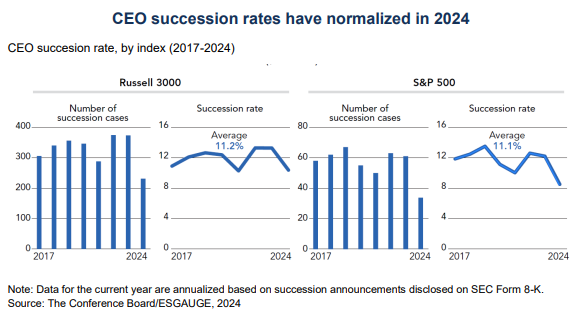
(Source: harvard.edu)
- CEO turnover in S&P 500 firms is projected to reach 14.8% in 2025, up from 3% average since 2001.
- 646 CEOs exited in Q1 2025 alone, underscoring the scale of leadership churn.
- 44% of new CEOs in 2024 were hired externally, indicative of thinning internal pipelines and succession gaps.
- Average CEO tenure now spans 3 years, down from longer past norms that show less tolerance for underperformance.
- Companies increasingly face a succession crisis fueled by weak middle management and rapid job‑hopping among younger talent.
- Many C‑level roles are being filled based on short-term “likability” rather than deep management capability, leading to 82% of executives lacking real leadership skills.
- Lack of succession planning correlates with higher turnover costs and reduced continuity, risking strategy and culture gaps.
- Demand is rising for leadership development: 59% of organizations report improved employee retention due to such programs.
- Leaders affirm that engaged leadership delivers 21% higher profitability, linking strong leadership to financial outcomes.
- 77% of organizations report insufficient leadership depthmaking pipeline vulnerability a widespread concern.
| Issue Area | Statistic or Outcome |
| S&P 500 CEO turnover rate | 14.8 % in 2025 |
| CEO exits in Q1 2025 | 646 |
| External CEO hires (2024) | 44 % |
| Average tenure of CEOs | 8.3 years |
| Succession crisis factors | Weak middle management, job‑hop… |
| Executives lacking leadership skills | 82 % |
| Succession planning absence | Linked to strategy risk |
| Retention improvement via development | 59 % organizations |
| Profitability gain | +21 % with engaged leadership |
| Organizations lacking depth | 77 % |
Gender Diversity in Leadership and Boardrooms
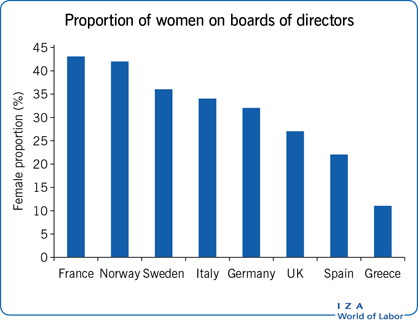
- After years of incremental progress, as of early 2023, global women in senior leadership represented only 32.2%, slightly down from 32.6% in 2022.
- As of 2025, 52 women hold CEO roles in Fortune 500 firms, making up just 10.4% of all CEO positions.
- In the U.S., women occupy 2% of senior roles in S&P 500 companies, while female CEOs remain at 8.2%.
- In FTSE 350 companies, women held 35.3% of senior leadership positions in 2024, below the 40% target for 2025.
- FTSE 100 board representation stands at 43.4% women, but executive director roles remain limited, with only 81 in total across FTSE 350 over two years.
- Women CEOs are 45% more likely to be fired than men, with an average tenure of around 5 years vs. men’s 8 years, highlighting systemic instability.
- Based on current trends, gender parity at the CEO level is estimated to be up to 81 years away globally; in the UK, FTSE 100 parity may not arrive until 2141.
- Managers under 35 and female managers saw sharper engagement drops ( to 5 and to 7 pts, respectively), tied to a lack of support and mentorship.
- North America boardrooms: women hold 2% of S&P 500 board seats, and in Canada, 20.8% in top TSX 60 firms.
- Firms with at least 30% female representation in leadership show an approximate 1 pp net-margin increase, translating to 15% profitability improvements.
| Gender Metric | Value / Insight |
| Global senior leadership women share | 32.2 % |
| Women CEO roles in Fortune 500 | 10.4 % (52 CEOs) |
| Women in S&P 500 senior roles | 29.2 %; CEO share 8.2 % |
| FTSE 350 senior leadership women | 35.3 % (2024) |
| FTSE 100 board women | 43.4 % |
| Women CEO firing likelihood | 45 % more likely; tenure 5 yrs vs 8 |
| CEO gender parity timeline | Up to 81 years globally; UK 2141 |
| Engagement drops among female/young managers | to 7 pts women; to 5 pts under 35 |
| Women’s board representation (NA) | 19 to 20.8 % |
| Profit gain at ≥30% women’s leadership | +15 % net margin |
Global Gender Diversity in Leadership
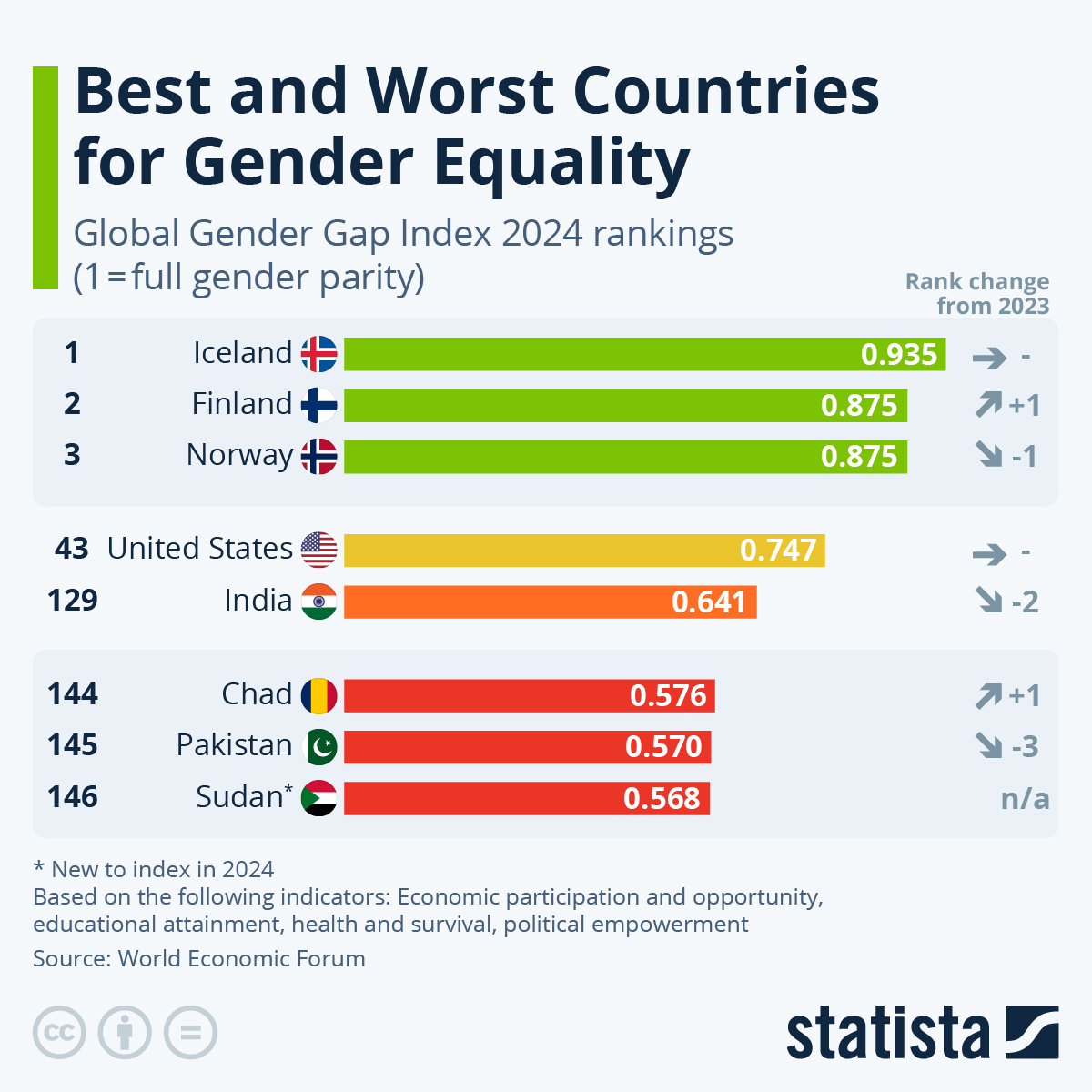
- Women now hold 11% of Fortune 500 CEO roles in 2025a record high with 55 companies led by women. This marks the first time the share has exceeded 10%.
- As of 2024, 10.4% of Fortune 500 CEOs were women, equivalent to 52 female CEOs, a percentage unchanged from 2023.
- Globally, women occupy approximately 28 to 34% of senior leadership roles, meaning senior-level gender parity remains decades away for many regions.
- Only 7.8% of S&P 500 CEOs are women, though women hold nearly 29.2% of senior roles overall among S&P firms.
- About 24% of global board seats are held by women, and having at least three women on a board correlates with improved decision dynamics and reduced bias.
- Companies with gender-diverse leadership report around 25% higher profitability and improved decision-making and innovation.
- Inclusive firms in IndiaMany of them with a stronger female representation, record nearly 50% higher profits compared to less-diverse peers.
- Women CEOs are 45% more likely to be removed than their male peers and often have shorter tenures (approx. 5 yrs vs. men’s 8 yrs), highlighting systemic instability.
- If current progress continues, gender parity in senior management at mid-market firms won’t arrive until 2051, per Grant Thornton’s estimates.
- Gender-diverse teams only benefit when women are integrated into core roles, boosting creative output by 0.04 to 0.09 standard deviations per SD increase in inclusive diversity.
| Leadership Aspect | Statistic / Insight |
| Women CEOs in Fortune 500 (2025) | 11% (55 CEOs) |
| Women CEOs (2024 data) | 10.4% (52 CEOs) |
| Women in senior leadership | 28 to 34% globally |
| S&P 500 senior roles & CEOs | 29.2% senior; 7.8% CEOs |
| Women on corporate boards | 24% of board seats |
| Profit lift from gender-div. | +25% profitability |
| Profit gain in Indian firms | +50% for inclusive firms |
| Women CEOs’ firing likelihood | 45% higher risk; shorter tenure |
| Parity timeline (mid-market) | Expected by 2051 |
| Diversity + inclusion effect | Creativity boost tied to inclusion, not just headcount |
Digital and Future Leadership Competencies
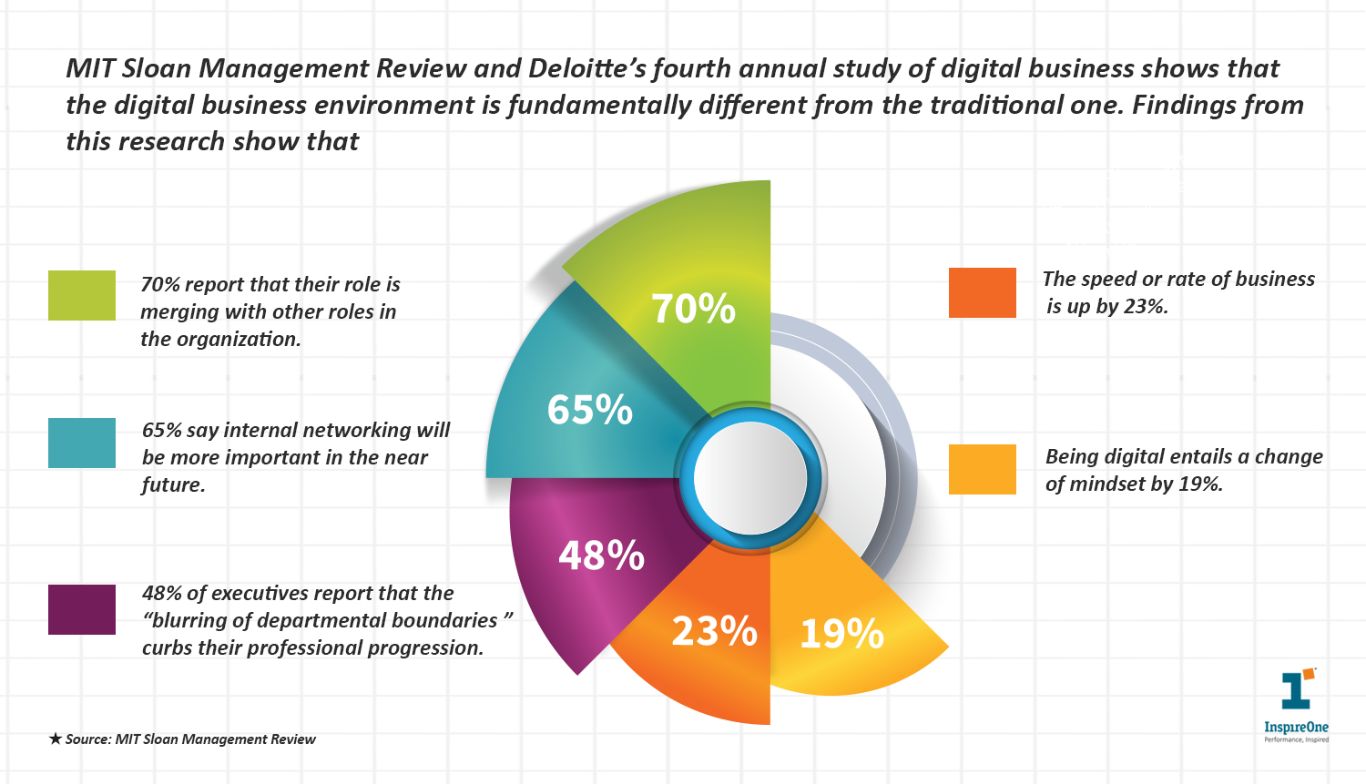
- 70% of skills required for leadership roles in digitalized workplaces are fundamentally different from traditional leadership capabilities, highlighting a shift toward AI literacy, remote coordination, cybersecurity awareness, agile mindset, and emotional intelligence.
- According to the World Economic Forum’s Future of Jobs 2025, leadership and social influence skills rose by 22% compared to 2023, followed by AI and big‑data skills (17 points), and resilience/agility (17 points).
- 89% of tech leaders cite an AI‑related skills shortage in their workforce is now the most scarce tech skill globally, rising from 28% to 51% shortage reports in just 18 months.
- 53% of U.S. C-suite executives prioritize cybersecurity expertise in hiring, with 64% considering cyberattacks the top business risk over the next decade.
- LinkedIn and WEF report 85% of employers will focus on upskilling for AI readiness in the next five years; 91% of L&D professionals say it’s more important than ever.
- Leaders must develop ambidexterity, the ability to seamlessly switch between exploration (innovation) and exploitation (execution) modes, enabling adaptability amid disruption.
- Emotional intelligence (EQ) is one of the top leadership skills for 2025, enabling trust-building across virtual teams and maintaining team morale in hybrid settings.
- Communication or “communicative intelligence”, defined by transparency and clarity, can increase job satisfaction by up to 12×, especially in organizations with younger generations.
- Organizations expect leaders to seek continuous improvement through micro-learning and experimentation.
- 83% of leadership development pros say learning must be “fast, fluid, future‑focused,” combining human and machine intelligence to drive skill-building.
| Competency / Trend | Key Descriptor |
| New leadership skill requirement | 70% of leadership skills are new |
| Growth in leadership/social influence skills | +22 points since 2023 |
| AI skill shortage | 51% of tech leaders report a shortage |
| Cybersecurity priority | 53% hiring emphasis, 64% risk concern |
| Employer upskilling commitment | 85 to 91% focus on AI readiness |
| Ambidexterity | Switching between innovation and execution |
| Emotional intelligence importance | Builds engagement and morale |
| Communicative intelligence | Transparency yields 12× satisfaction |
| Curiosity and continuous learning | Critical mindset for adaptation |
| Learning & development approach | Fast, fluid, future-focused programs |
Leadership Development and Mentorship Programs

- 83% of organizations view leadership development as essential to success, but only 5% fully integrate it into core strategy, like succession planning and performance systems.
- Leadership development boosts employee retention by 29% and improves organizational performance by 25% on average, according to Harvard and LinkedIn, to McKinsey data.
- Yet around 30% of employees feel unprepared for their leadership role, citing inadequate onboarding and guidance.
- 60% improvement in leadership skills can be achieved through structured mentoring programs, per DigitalDefynd’s 2025 insights.
- 70% of companies now deliver leadership training via digital platforms; blended learning methods have grown 25% annually.
- Microlearning (short, focused lessons) improves retention of leadership training by 30%, and coaching adoption is up 18%.
- Emotional intelligence training adoption for leaders has grown by 25%, underscoring EQ’s strategic importance.
- Over 60% of organizations emphasize collaboration and teamwork in leadership development curricula.
- Reverse mentoring programs, where junior staff mentor senior leaders, have risen by 15%, fostering diversity, innovation, and fresh perspectives.
- Despite benefits, 25% of organizations cite budget constraints and 50% lack program alignment with company goals as barriers to effective leadership development.
| Dimension | Penetration or Outcome |
| Organizations valuing leadership dev | 83% |
| Fully integrated programs | 5% |
| Retention lift | +29% |
| Organizational performance boost | +25% |
| Leaders feeling unprepared | 30% |
| Skill gain via mentoring | +60% |
| Digital/blended learning growth | 70% usage, 25% annual increase |
| Microlearning retention improvement | +30% retention |
| Growth in reverse mentoring | +15% |
| Development barriers (budget/alignment) | 25 to 50% of organizations |
CEO Tenure, Turnover, and Succession Readiness
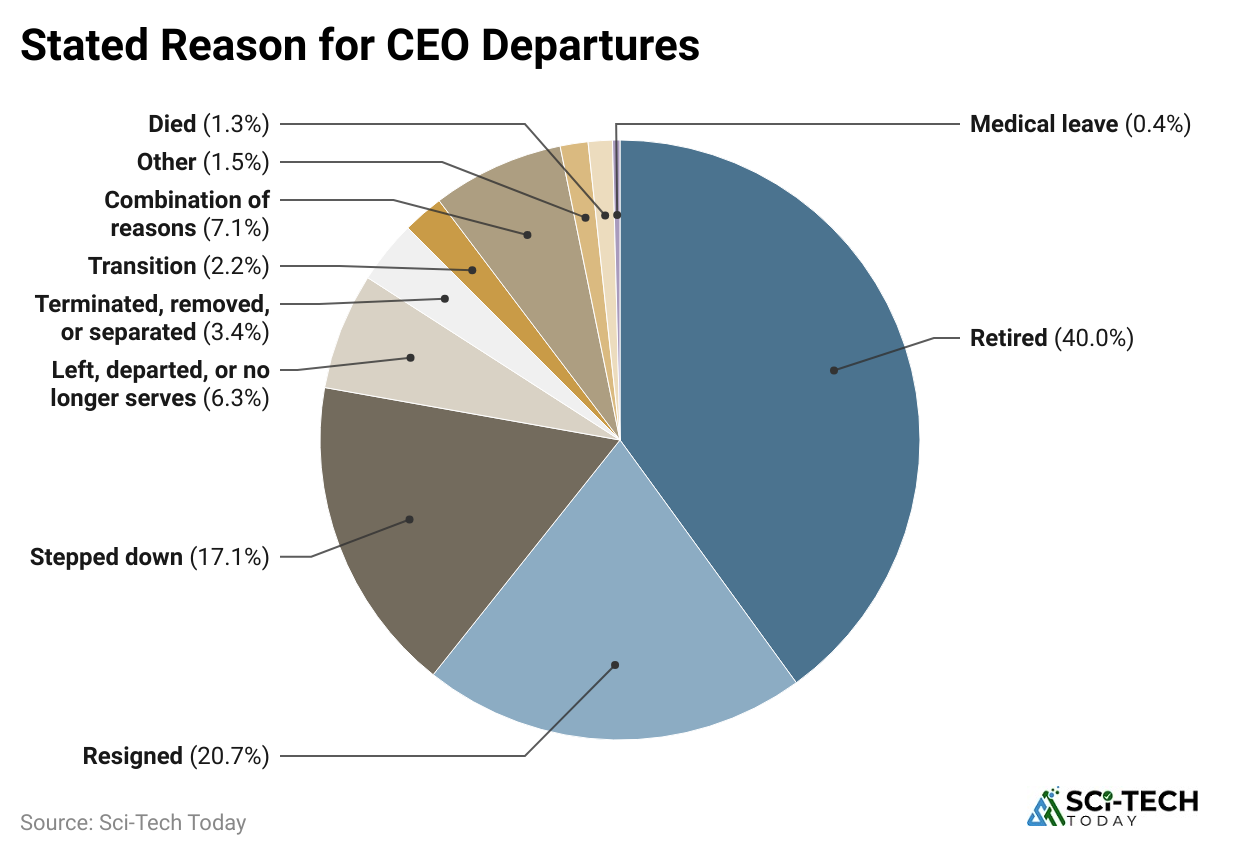
- In S&P 500 firms, 2025 CEO turnover is on track to hit a record 14.8%, compared to the historical average of 11.3% since 2001.
- A staggering 646 CEOs left their roles in Q1 2025, demonstrating leadership disruption on an unprecedented scale.
- 44% of new CEOs in 2024 were external hires, suggesting internal leadership pipelines are insufficiently deep or unsustainable.
- Average tenure of outgoing CEOs dropped to 6.8 years in Q1 2025, down from 8.1 years in Q1 2024; in the FTSE 100, it’s just 1.1 years in some cases.
- Women represented 13% of CEOs appointed in Q1 2025, up from 7% in Q1 2024signifying improving gender equity at the top.
- Planned succession removes only around 28% of CEOs, still low, though improving (up 7 points from 2024).
- 82% of executives are judged by boards to lack essential leadership skills. Selection often favors likability over capability.
- Organizations with strong leadership experience 21% higher profitability, while leadership gaps correlate with turnover risk and strategy disconnects.
- 77% of companies report insufficient leadership depth, echoing the risk of future pipeline breakdowns.
- Boards are under pressure to rebuild internal pipelines; expert calls to reinvest in leadership development are intensifying as succession crises loom.
| Metric or Issue | Statistic / Trend |
| S&P 500 CEO turnover (2025 projected) | 14.8% |
| CEOs departed in Q1 2025 | 646 |
| External CEO hires (2024) | 44% |
| CEO tenure (Q1 2025 average) | 6.8 years |
| Women among Q1 2025 CEO appointments | 13% |
| Planned succession rate | 28% (7 pts vs 2024) |
| Executives lacking key leadership skills | 82% |
| Profit uplift with strong leadership | +21% |
| Organizations report being under‑led | 77% unclear depth |
| Succession crisis acknowledgment | Calls for reinvestment in leadership dev |
Conclusion
So from these leadership Statistics, we can say, leadership isn’t just about titles or fancy positions, it’s about the impact. The statistics we explored tell much more than percentages and numbers; they paint a picture of what effective leadership looks like in today’s world and where we still need to improve.
From the challenges women face in reaching top roles to how digital skills are impacting leadership and the critical importance of developing and retaining strong leaders, these numbers give us a roadmap. These stats guide us toward a future where leadership is more inclusive, agile, and impactful. And that future starts with understanding the data today. Thanks for staying up until the end.
Sources
FAQ.
Leadership statistics refer to data and numerical insights that measure different aspects of leadership, such as leadership styles, gender diversity, effectiveness, turnover rates, and skills trends in organizations.
They help organizations and individuals understand what leadership strategies work best, identify gaps in leadership diversity or skills, and make data-driven decisions to improve performance and employee engagement.
As of 2025, women hold about 11% of CEO positions in Fortune 500 companies, showing slow but steady progress toward gender parity in top leadership roles.
Studies show that servant leadership and transformational leadership styles can boost employee engagement by up to 30% by fostering trust, collaboration, and motivation.
Digital literacy, emotional intelligence, adaptability, communication, and AI-related skills top the list, reflecting the shift toward technology-driven and people-centered leadership.
The average CEO tenure has been declining and is around 6.8 years as of 2025, partly due to increasing business pressures and faster market changes.
Companies with higher gender diversity in leadership roles often see profitability improvements of up to 25%, along with increased innovation and better decision-making.
Succession planning is the process of identifying and developing future leaders within an organization to ensure smooth leadership transitions and business continuity.
Well-structured leadership development and mentoring programs can improve leadership skills by over 60% and increase employee retention by nearly 30%.
Emotional intelligence helps leaders manage relationships, navigate change, and build trust with their teams, which is critical for maintaining high performance and engagement.

Joseph D'Souza founded Sci-Tech Today as a personal passion project to share statistics, expert analysis, product reviews, and experiences with tech gadgets. Over time, it evolved into a full-scale tech blog specializing in core science and technology. Founded in 2004 by Joseph D’Souza, Sci-Tech Today has become a leading voice in the realms of science and technology. This platform is dedicated to delivering in-depth, well-researched statistics, facts, charts, and graphs that industry experts rigorously verify. The aim is to illuminate the complexities of technological innovations and scientific discoveries through clear and comprehensive information.


